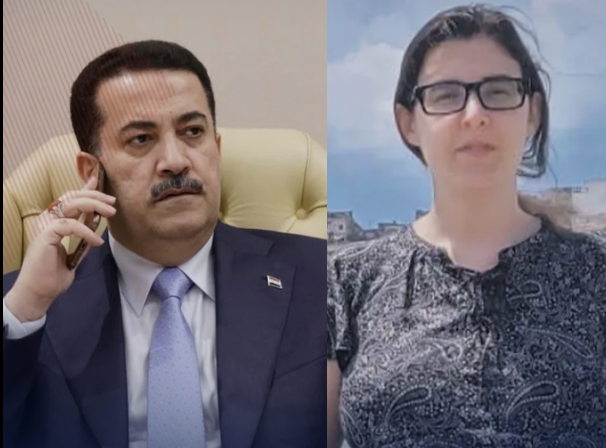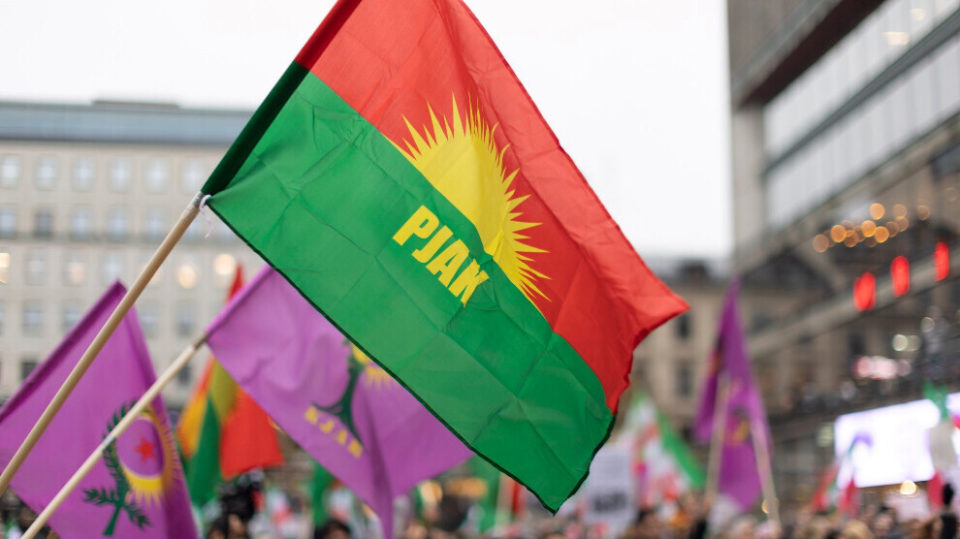Turkey’s Dance with the Islamic State
Turkey’s Dance with the Islamic State
Turkey’s relationship with terrorism is entrenched with history. The country fell victim to the actions of different terrorist groups with different motivations. The most popular terrorist organization in Turkey’s history is the Kurdistan Workers’ Party (PKK), which has been active for almost 40 years. Another notable terrorist organization is the Revolutionary People’s Liberation Party/Front, an outcome of the Cold War legacy. Turkey has also been faced with the presence of radical Islamist Kurdish Hezbollah, which was active during the 1990s.
While the Turkish government and its security forces were fighting against the PKK in the south-eastern part of the country earlier this month, another terrorist attack was carried out by suicide bomb in Istanbul’s most popular touristic and historical district, Sultanahmet. The bomber detonated himself next to a tourist group on January 12, killing 10 Germans and wounding another 15.
Shortly after the attack, police made a statement claiming, “The suicide bomber was an ISIL member and a Syrian citizen” (Reuters, January 13). The suicide bomber had crossed the Turkish border as a refugee few days before the attack, similar to 2,750,000 other refugees over the past four years. The identity, target and the methods of the terrorist indicated a new wave of terrorism for Turkey.
Turkey has become a target of Islamic State activity, as its geopolitical position, motility of its ethnic and sectarian fault lines, its cosmopolitan demographics, its annual influx of 35 million tourists, and the presence of many western companies on its soil have all come into play. On the other hand, the politicians, public and security institutions do not appear prepared to face a terrorist group with such brutal, multinational and religious foundations and practices. The reason for the Islamic State targeting Turkey puts on display the organization’s changing attitude towards the country. Recent developments depict that the Islamic State has the potential as well as the motivation to pose a security threat to Turkey.
The Islamic State and Turkey
From the very first days of the insurgency in Syria against Assad, the Turkish government predicted that the end of his regime was soon to come. However, Assad disappointed these expectations and, as a result, the insurgency became prolonged. Turkey and its allies wanted to accelerate the process through their support of anti-Assad opposition forces. Turkey sent arms and ammunition to the opposition and made it easier for foreign fighters to enter Syria to join the cause. In this respect, border controls between Turkey and Syria loosened and Turkey started following an “open door policy” (Hurriyet Daily News, May 27, 2013). With the persistence of the regime came the fragmentation of the Syrian opposition forces. Gradually, the groups that utilized brutality and had developed radical discourse became the most effective and influential opposition groups operating in Syria.
Turkey’s “two-way open-door policy” caused large scale logistical and demographical changes, including those impacting militant mobility. Not only did Turkey become the crossing route for foreign fighters, but many Turkish citizens joined groups fighting in Syria, as well (Hurriyet Daily News, February 4, 2015; Milyet.com, July 18, 2014). Some of these people fought, some encouraged others to fight, and some went back to Turkey in order to spread their ideas and establish “sleeper cells.”
In this context, a number of Turkish citizens who traveled to fight in Syria were Kurds who joined the Democratic Union Party, PKK’s Syria wing, while some other Islamist Kurds joined the Islamic State. These Islamists included many of those who had broken away from the Kurdish Hezbollah, established by the post-1979 Iranian intelligence in conflict with the Marxist PKK during the 1980s and 1990s. Meanwhile, local radical Islamists traveled to Syria as jihadists, some of whom were Turkish and Caucasian. In due course, these jihadists transferred to different radical groups, largely the Islamic State. Within that period, some humanitarian aid organizations that maintained close ties with the Turkish government constructed a web of strong and deep aid routes within Syria and helped transfer Turkish and foreign fighters deep into Syrian territory. Some Alawite citizens of Turkey also joined the conflict, fighting for the Democratic Union Party or the Assad regime.
In the second year of the insurgency, the situation in Syria grew even more complicated. The radical religious statements and actions of the Sunni groups fighting against Assad caused increased tensions and distrust between Turkey and its allies. The Islamic State capitalized on this tension and conflict and began to more actively establish its presence in 2014. However, the Turkish public became more generally aware of the Islamic State when three of its members were captured during a gunfight that occurred on their way to Istanbul.
The Islamic State, positioned far from the Turkish border and from most of Assad’s forces, prioritized the elimination of other radical groups feeding from resources it relied upon. The flourishing organization further captured headlines with its occupation of Mosul, Iraq, on June 6, 2014. Following the occupation, the Islamic State took 28 Turkish truck drivers and 49 Turkish Foreign Ministry staff working at the consulate in Mosul as hostages. The hostage crisis ended on September 20, 2014, after the Islamic State had proven itself as a significant new security problem for Turkey (Hurriyet Daily News, September 20, 2014).
In the following days, the Islamic State attacked Erbil, the capital of Iraqi Kurdistan. Barzani and the PKK managed to stop the advance with the help of the U.S. Air Force. In response, the Islamic State shifted its attacks to Syria, targeting the Syrian-majority Kurdish town of Kobane on the Turkish border on September 13, 2014; the group managing to enter the city on October 5, 2014. The PKK and Democratic Union Party, the defenders of the city, initiated a new propaganda campaign to gain membership as well as support from the broader population. This campaign triggered conflict between Kurdish groups with different ideologies living in cities in southeastern Turkey. During the conflict in Kobane, many government buildings were damaged and 49 Islamist Kurds supporting the Islamic State were killed by the PKK and its sympathizers between October 6 and 7 of 2014. In February 2015, with help from United States airstrikes, the Islamic State was forced by the Kurds to retreat from the Kobane region, suffering heavy losses.
The Islamic State’s Turkey Strategy
The Islamic State’s perspective on Turkey has been changing. Geopolitical necessities and relations between Turkey and local actors contribute heavily to this shift in opinion as well as strategy. The Islamic State is cognizant of the importance of Turkey, due to the group’s dependency on the country’s foreign fighters and logistics flowing over the border with Syria.
It is possible to categorize Turkey-Islamic State relations through the lens of different stages. The first stage was the period of “still and low-profile relationship.” The second, described as the “two sub-state group conflict,” saw the Islamic State target PKK-affiliated individuals on Turkish soil, following the terrorists’ defeat by the PKK at Kobane. The third stage, the start of which is marked by the Sultanahmet bombings and is ongoing, will continue to see attacks on Western targets in Turkey, and follows a Turkish crackdown on domestic Islamic State supporters. In the fourth, still-to-come stage, the Islamic State will likely attack Turkish state and political institutions.
The January 12 attacks on foreign tourists in Istanbul is a strong indication that the Islamic State is changing its strategy. By carefully avoiding the targeting of Turkish citizens in the attack, the Islamic State may be able to gain sympathy and support from less-radical Islamist groups in Turkey. Furthermore, Turkey’s restrictions on its pre-existing two-way open-door policy, the U.S. Air Force strikes from Incirlik Air Base, and the Democratic Union Party closing the border have limited the Islamic State’s maneuverability in the region. The military’s training of Kurds and Sunni Arabs in Iraq by Turkish soldiers and Turkey’s shooting down of a Russian military jet have similarly factored in the Islamic State’s changing strategy. Since the Istanbul attack, the Turkish government has intensified its operations against the group, notably using intense cross border artillery fire to force Islamic State militants in Syria to retreat from the Turkish border, in conjunction with Turkish efforts to give the remaining territories to “moderate” Sunni Arab opposition forces. These developments indicate that the Islamic State has the potential, as well as the motivation, to pose a more potent security threat to Turkey. The threat stems not only from Syrian refugees and foreign fighters, but also from radicalized citizens within Turkey’s own borders.
Dr. Nihat Ali Özcan workd at TOBB University of Economics & Technology, International Relations Department as an Associate Professor and as an expert at The Economic Policy Research Foundation of Turkey. Additionally, he writes on Milliyet Newspaper as a columnist.


